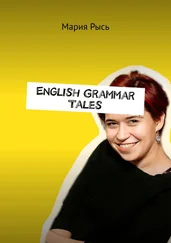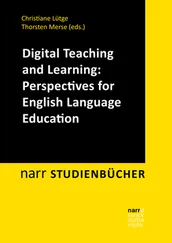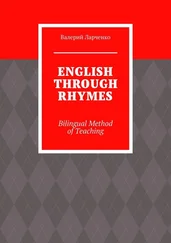Language is therefore considered to be a reflection of human cognition and conceptualization. Cognitive linguistics holds that people do not have direct access to an objective, external reality (cf., for example, EVANS/GREEN 2006: 47), but can only access their subjective and anthropomorphic conceptualizations directly. The linguistic representation of an event is then based on the conceptualization that the event evokes in a language user or that the language user chooses to adopt.
Language is not only a reflection of human cognition but at the same time reflects the fact that humans are embodied beings. The bodies people have influence their experience of the world, which is then reflected in the language they use and the ways how they use it. Many basic experiences have to do with the human body, which is therefore a crucial element in many areas of conceptualization. Cognitive linguists call this phenomenon ‘embodiment’ and speak of ‘embodied meaning’, which is seen as deriving from people’s general cognition, world view and experiences1. To give an example: an embrace offers human warmth, which is seen as positive2, and therefore the expression “a warm welcome”, even if it refers to an encounter where nobody touches another person and therefore no body warmth can actually be experienced, metonymically relates to a positive experience as well.
Another example, this time from the area of grammar, relates to the fact that humans experience their bodies as containers (containing, for example, their organs, their blood, other body fluids etc.) and therefore the preposition in always refers to containment, either in a concrete sense (“wine in the bottle”) or in a temporal sense (“I have to be back in an hour” – the hour contains the time that the person was allotted) or in a metaphorical sense (“I was caught in a traffic jam” – the traffic jam is seen as a container which contains lots of cars and persons, amongst them the speaker). All these situations share the idea of containment (be this concrete, temporal or abstract) due to the use of the preposition in 3. As can be seen from these examples, humans conceptualise their surroundings according to their embodied knowledge and it is only a small step to assume that they do not only do this when speaking but also when thinking.
3.1.2 Lexis-grammar continuum
The above-mentioned examples already hint at another of the tenets of cognitive linguistics, namely that it assumes a lexis-grammar continuum and does not see these two areas as opposites. Whereas in generative linguistic a sharp distinction is made between syntax and the lexicon, this distinction is not accepted in cognitive grammar, nor are strict grammatical rules accepted (cf. BROCCIAS 2006: 81). BROCCIAS (2006: 82) describes that in cognitive grammar “syntax and the lexicon form a continuum of constructions ranging from very specific elements (e.g. cat, kick the bucket ) to increasingly more general patterns (e.g. nouns, transitive constructions)”. In the cognitive approach, grammar is not seen as consisting of strict rules, but instead as a solution that generations of speakers of a speech community have found to structure their thoughts with the intention of communicating them to other people (cf. RADDEN/DIRVEN 2007: XI).
The same organisational principles apply for lexis as they do for grammar, for example, embodiment, metaphorization, or the notion of boundedness vs. unboundedness. There are countless examples for embodiment in lexis, as human body parts are frequently metaphorically used to designate non-body concepts, as, for example, “foot of the mountain”, “eye of a needle” or “leg of a journey”. An example of embodiment in grammar was already mentioned for the container meaning of in , which can refer to concrete containment (as in “the wine in the bottle”) or to metaphorical containment (as in “caught in a traffic jam”).
In the field of lexis, the notion of boundedness vs. unboundedness1 relates to the distinction between count nouns and mass nouns. Count nouns have a clear contour or boundary and are individualised (such as “cat” or “computer”), i.e., they are bounded, whereas mass nouns refer to non-individualised entities (such as “water” or “salt”) without a clear boundary, i.e., they are unbounded. The same distinction can be found in grammar, as the non-progressive aspect for inherently bounded events (i.e., “he played tennis”) refers to an event with a clear temporal boundary, including the beginning of the event as well as its end, and which is therefore seen as bounded, whereas the progressive aspect for the same verb (i.e., “when I saw him he was playing tennis”) refers to an ongoing event, the boundaries of which are defocused. This event must have begun at some point, but has not yet reached its end when the progressive aspect is used to describe it, and it can therefore be seen as unbounded.
The difference between the two poles of the lexis-grammar continuum is that the principles are evident in a very concrete way when it comes to lexis, but that they are more abstract when it comes to grammar. In the middle of the continuum, where phenomena such as prepositions are to be found, the principles are evident less concretely than for the completely lexical pole and more concretely than for the completely grammatical pole. This difference also relates to the notion of ‘meaningfulness’ – lexical meaning is quite concrete (the word “tree” calls up a very specific mental image of a prototypical tree from the language user’s culture) whereas grammatical meaning is more abstract (using prepositions as an example again, “ in my mind” means that the mind is the container of something, usually thoughts or knowledge, whereas “ on my mind” means that something is on top of the speaker’s mind, weighing him/her down, and which therefore presumably refers to a problem). Even if speakers do normally not have concrete mental images for prepositions, they are able to perceive the presented situations holistically. The important aspect to underline in this context is again that there IS meaning in grammar, although it is abstract, and that this meaning can be explained to learners.
A further important notion in cognitive linguistics is categorization. Humans categorise everything they encounter, as this kind of mental organisation is a precondition for retrieval. The ability to categorise is present from early childhood onwards, although small children’s categories do not yet necessarily mirror those of adults. Children who have never seen a cow, but know horses, might lump the first cow that they encounter into the horse category, as these two types of animals have certain properties in common (a certain size, four legs etc.). When children grow older, they develop more fine-grained, adult-like categories. These categories are shaped by the language community’s social, cultural and linguistic input and are therefore resistant to change, although they are not completely unchangeable, as, for example, through scientific discoveries. However, quite frequently folk categories, i.e., non-expert categories, are kept up for a very long time. For example, although it is known today that the strawberry is actually a nut, most people still categorise it as a fruit.
These conceptual categories are reflected in language and in turn mirror cultural beliefs. As TYLER (2012: 47) puts it: “one would expect that speakers from different linguistic and cultural backgrounds will have somewhat different categories with different prototypes”. The category ‘animals’, for example, comprises all kinds of animals in the German (and British) culture – mammals, birds, reptiles, fish, insects and so on. In Australia, only mammals are ‘animals’, whereas the other groups are not called animals, but birds, reptiles, marsupials, fish or insects – there is no superordinate category. In the USA and in Canada, on the other hand, all these kinds are called ‘animals’ with the exception of insects, which are only called ‘insects’ and do not fall into the animal category. This goes to show that even in closely related cultures category membership can differ.
Читать дальше












